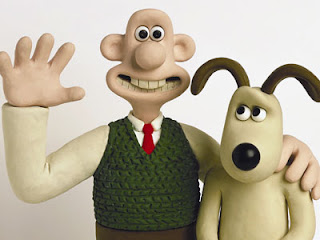Thursday, 24 November 2011
In Todays Lesson
Today in class i have edited the the model animation that i created and uploaded last week. I have now added an introduction and ending credits. I used the apple program iMovie to edit the video, it was very simple to use.
I will post my new animation shortly.
I will post my new animation shortly.
Thursday, 17 November 2011
Thursday, 10 November 2011
Thursday, 3 November 2011
Model Based Animation - Example
This is an example of model based animation using lego
Star Wars Uncut - Scene 362 from Carlos Santiago on Vimeo.
Star Wars Uncut - Scene 362 from Carlos Santiago on Vimeo.
Model based Animation - Example
This is an example of Model Based Animation using modeling clay
Pigeon Pilfer from Michael Stevenson on Vimeo.
Pigeon Pilfer from Michael Stevenson on Vimeo.
Model Based Animation
Model based animation is taking a series of photos of models and slightly moving them or changing the way they look. When you play through the images it looks like the model is alive. Many things can me used to do this such as modeling clay, toys or any inanimate object.
A popular model based animation would be Wallace and Gromit
Made by Nick Park of Aardman Animations
A popular model based animation would be Wallace and Gromit
Made by Nick Park of Aardman Animations
Thursday, 20 October 2011
What is cell Animation?
Cell based animation generally has 25 frames per second. Somebody would draw each frame individually with slight differences. When cell based animation first started it was very time consuming to create even the shortest of animation. Now it has been made easier by computers, but the technology is expensive and only used by the industry.
the most famous Cell animation would be the work from Walt Disney
the most famous Cell animation would be the work from Walt Disney
Steam Boat Willie
Walt Disney
Saturday, 15 October 2011
Thursday, 13 October 2011
Today in Animation
In class today in a group we created two short pixilation animations. The second animation was a more improved version of the first one. I will up load these videos from vimeo in my next post.
Pixilation Animation
Pixilation animation is a series of photos of one or more objects moving around. Each photo has a small difference in movement with gives the illusion that the object is moving in an un-natural way.
This is an example of a Pixilation Animation from vimeo
Ten Thousand Pictures of You from Robin King on Vimeo.
This is an example of a Pixilation Animation from vimeo
Ten Thousand Pictures of You from Robin King on Vimeo.
Monday, 10 October 2011
Thursday, 6 October 2011
Todays Lesson: Cut Out Animation
In todays lesson in my group of myself, Dan Charlton, Amy Fall and Emily Tatters. We have created our first cut out animation. We have used the cut outs we made in our last lesson. To create the animation we used the software "iStopMotion". It is the first version of our animation, we will add sound at a later date. I have published the animation on Vimeo as "Our First Cut Out Animation version 1.0" and will post in in my next blog post.
Thursday, 29 September 2011
In Animation Today
Today we have collected cut out images and have a basic idea on an a shot animation we can use them for.
Thursday, 22 September 2011
What is a Time Lapse?
A time lapse is a series of image showing a slow movement of change over a period of time. A camera is positioned in a location and takes photos are regular intervals, and when played back shows movement of time.
Time Laps
A group of us have created a time lapse in class using iStopMotion. We recorded 15 seconds taking a photo every 3 seconds. I have uploaded our video on www.Vimeo.com
This is not my Time Lapse, this is a video i like that i found on Vimeo.
Tuesday, 20 September 2011
Thursday, 15 September 2011
Persistence of Vison
What is "Persistence of Vision"?
Persistence of vision is when the the retina retains what it has seen for a split second, around 0.4 of a second, after the image has been removed. Using a cerise of images one after the other, all with very slight differences, the brain can be tricking into thinking that the object is moving. The brain will fill in the gaps of the movement of the object, this is how animation is created. So you are seeing what has happened and what is happening creating a continues movement.
Persistence of vision is when the the retina retains what it has seen for a split second, around 0.4 of a second, after the image has been removed. Using a cerise of images one after the other, all with very slight differences, the brain can be tricking into thinking that the object is moving. The brain will fill in the gaps of the movement of the object, this is how animation is created. So you are seeing what has happened and what is happening creating a continues movement.
Thursday, 8 September 2011
Subscribe to:
Posts (Atom)



